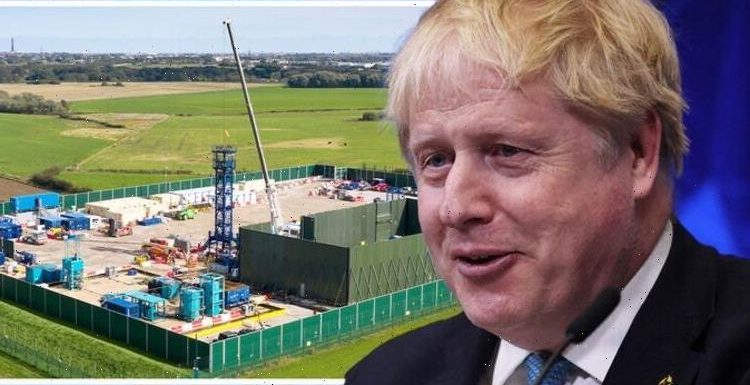
LBC: Nick Ferrari 'Let's get cracking with fracking!'
We use your sign-up to provide content in ways you’ve consented to and to improve our understanding of you. This may include adverts from us and 3rd parties based on our understanding. You can unsubscribe at any time. More info
Cuadrilla had been told to seal up its shale gas wells in Lancashire by June 2022. But the North Sea Transition Authority (NSTA) has now said Cuardilla has until the end of June 2023 to assess options for the Preston New Road and Elswick sites in Lancashire. Fracking is a technique for extracting gas and oil from shale rock. The Government decided to end its support for the practice in 2019 after campaigners piled on the pressure regarding environmental concerns, and fears of Earth tremor following a report by the Oil and Gas Authority
But amid soaring energy prices, the latest move could indicate that the Government is u-turning on this position.
It comes as Boris Johnson is poised to announce a new energy strategy next week as bills continue to soar for millions of households.
Cuadrilla chief executive Francis Egan said: “I would like to thank the Prime Minister and the Business Secretary for seeing the light and realising – just in time – how absurd it would have been to force us to pour concrete down Britain’s only two viable shale gas wells in the middle of an energy crisis.
“But this suspension will have a cul-de-sac ending unless we now reverse the moratorium preventing us from using the wells (and others like them) to get shale gas out of the ground and flowing into British households.”
Pippa Crera, Political Editor of the Daily Mirror, tweeted: “Regulators lift order on fracking firm Cuadrilla to plug its wells in Lancashire by end June.


“Means Government may shift on fracking in the delayed energy strategy expected as soon as next week.
“Boris Johnson is under pressure from Tory MPs to end moratorium amid energy crisis.”
Mr Johnson reportedly started to consider lifting the 2019 ban on fracking after coming under pressure from 34 members of his own party.
The pressure was also piled on as an encouragement to help Britain slash energy ties with Putin as the West scuppers its links with Russia amid the Ukraine crisis.
While only 5 percent of the UK’s gas is supplied by Russia, decreased Russian supplies travelling into Europe (40 percent of Europe’s imports come from Russia) meant the entire energy market saw prices skyrocket.

The Net Zero Scrutiny Group is being led by Steve Baker, a former Brexit minister, who said: “There’s a war on which appears to be possible only because Europe is, as the PM said, addicted to Russian gas.
“While Putin bears responsibility for the ultimate war crime of initiating a war of aggression, everyone who allowed our shale gas to remain in the ground on a false pretence should hang their heads in shame as the Ukrainian people fight and die for their country.”
But critics say lifting the fracking ban may not do enough to ease the crisis, which has got so bad that bills could even rise to £3000 in October.
The price cap (maximum tariff) is already soaring to £2000 in April.
DON’T MISS
Russia issues threat as NASA astronaut to leave ISS: ‘We can fight’ [REVEAL]
Putin panics as Nigeria offers to plug EU’s Russian supply gap [REPORT]
UK signs historic deal to secure critical metal supply for new gigafac [INSIGHT]


Mike Foster, head of the Energy Utilities Alliance, told Express.co.uk: “Fracking, in theory, could source gas from the UK to displace Russian gas but it is untested in the UK and unlikely to be relevant in the short term.
Energy Professor Mike Bradshaw from Warwick University, says estimates of how much shale gas the UK do not equate to the amount of gas that could be produced commercially.
Critics also argue that it would take years for the shale gas to come into use.
And analysis from Dr Simon Evans from the Carbon Brief suggests that fracking would meet less than five percent of the UK’s gas demand over the next five years, even in the best-case scenario.
Source: Read Full Article